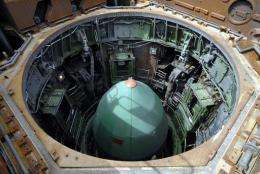Ex-'Satan' rocket launches three European micro-satellites

A former Soviet SS-18 intercontinental missile lofted a trio of European micro-satellites into space on Wednesday, including a satellite to monitor the Sun's impact on climate change, France's National Centre for Space Studies (CNES) said.
The Russian-Ukrainian Dnepr lifted off at 1442 GMT from Yasny, southern Russia, the CNES said in a press release issued in Paris.
Its triple payload included a 150-kilo (330-pound) French satellite called Picard that will scrutinise the Sun for changes that could affect Earth's climate system.
More than 80 percent of current climate change is attributable to greenhouse gases that trap solar heat, leaving variations in solar output as the other big contributor.
Picard, named after a 17th-century French astronomer who investigated solar activity, will orbit at an altitude of 725 kilometres (453 miles), the CNES said.
It carries a telescope that will take images of the Sun in five wavelengths, and two other instruments to measure the Sun's energy output.
The other passengers aboard the Dnepr were the satellites Mango and Tango, under a Swedish Space Corporation project called Prisma.
They will test new sensors and navigation technologies designed to enable satellites to rendezvous or fly in formation in space.
The SS-18 was code-named "Satan" by NATO in the Cold War's heyday. In the 1990s, a number of the missiles were converted so that they could carry small civilian payloads into low Earth orbit.
(c) 2010 AFP


















